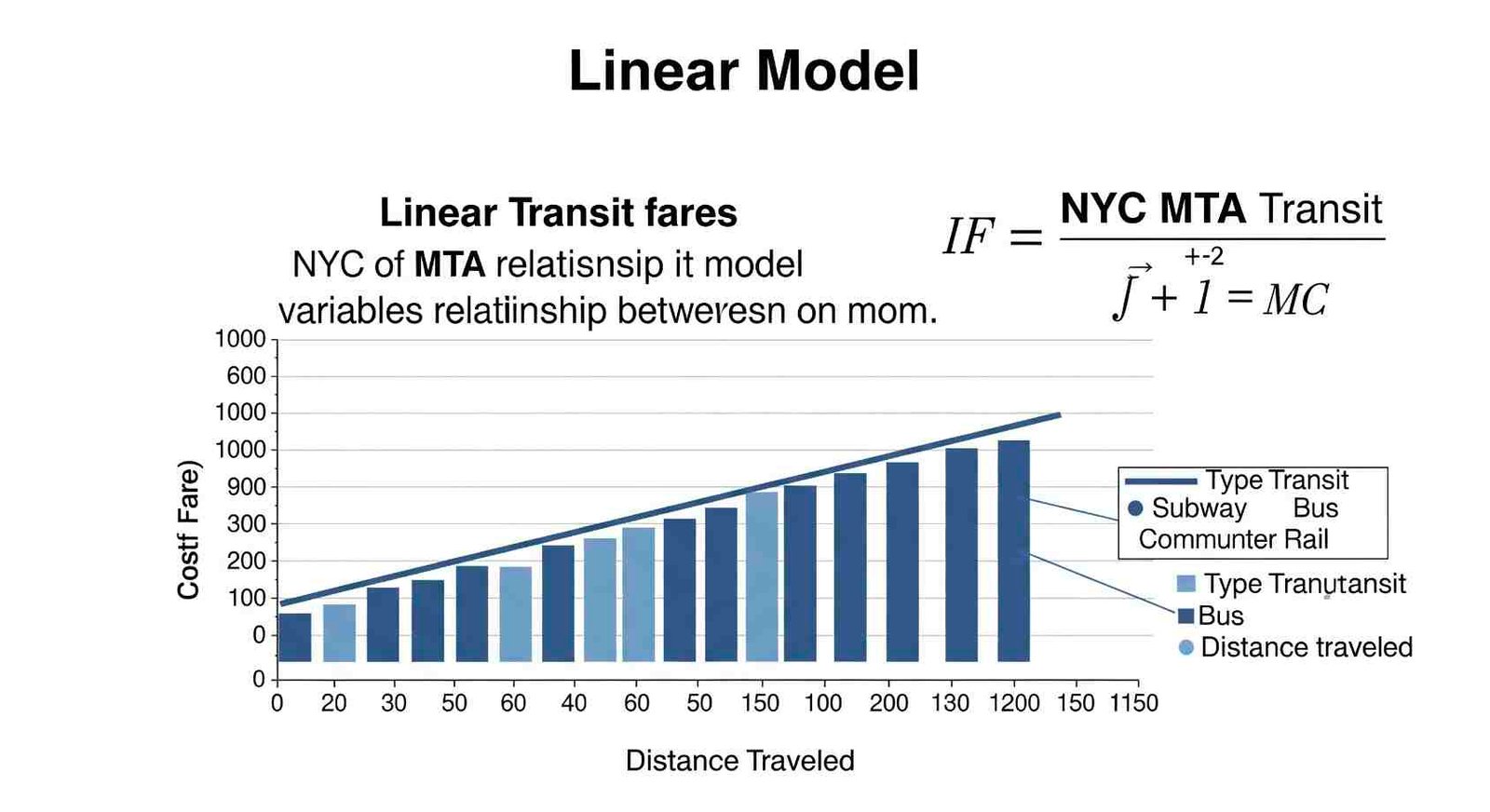news
Predicting Fare Trends with Linear Modeling of NYC MTA Transit Fares

Urban transportation systems like the NYC MTA constantly evolve in response to shifting economic conditions, rider demand, and policy changes. With such dynamic factors at play, forecasting fare structures becomes essential. One powerful method used by data analysts and transit planners is linear modeling of NYC MTA transit fares. This mathematical approach helps uncover patterns, project future costs, and assist in making informed policy decisions.
Understanding the Basics of Linear Modeling
Linear modeling is a statistical technique that establishes a relationship between dependent and independent variables. In the context of transit fare analysis, the fare amount is typically the dependent variable, while variables like inflation, fuel costs, service upgrades, and ridership numbers serve as independent variables.
This method assumes a linear relationship, meaning that changes in the predictors (like fuel prices or operating costs) are expected to cause proportional changes in fares. For the linear modeling of NYC MTA transit fares, these insights help transportation officials balance budget requirements with public affordability.
Why the NYC MTA Fare System Is Ideal for Linear Modeling
The NYC Metropolitan Transportation Authority has a vast dataset that is publicly available and highly structured, making it suitable for statistical modeling. Historical fare data going back decades can be paired with macroeconomic indicators, ridership statistics, and funding cycles.
Data-Rich Environment
Because the MTA serves over 5 million people daily and records usage by metro cards, OMNY, and digital transactions, the amount of data available is immense. This enables detailed and precise linear models that reflect real-world behaviors.
Regular Adjustments
Another reason the linear modeling of NYC MTA transit fares is effective is the predictable cadence of fare changes—usually every few years. This regularity allows trends to be tracked, understood, and forecasted.
Key Variables in Transit Fare Prediction Models
To construct a reliable linear model, choosing the right variables is essential. Not all factors impact fares equally, and oversimplification can lead to inaccurate predictions.
Common Independent Variables:
- CPI (Consumer Price Index): Often used to track inflation’s effect on pricing.
- Fuel Prices: Diesel and electricity costs directly impact operational budgets.
- Maintenance Costs: Infrastructure repairs and fleet upgrades.
- Ridership Trends: Higher or lower passenger counts influence fare strategies.
- Policy Interventions: Subsidies, congestion pricing, or funding injections.
The linear modeling of NYC MTA transit fares incorporates these metrics to generate a holistic view of fare fluctuations. A model may look something like:
Fare = β₀ + β₁(CPI) + β₂(Fuel Cost) + β₃(Ridership) + ε
Limitations and Challenges of Linear Modeling in Transit Analysis
While linear regression offers clarity, it’s not without flaws. Real-world fare structures are often influenced by non-linear or unpredictable events.
- Policy Disruptions: Sudden political changes can override economic patterns.
- Pandemic Effects: COVID-19 caused dramatic drops in ridership, which were not forecastable.
- Public Backlash: Fare hikes often encounter resistance, limiting implementation.
- Subsidy Variability: Government support is sometimes inconsistent, breaking predictable trends.
Despite these limitations, the linear modeling of NYC MTA transit fares remains a useful tool when combined with scenario planning and updated datasets.
Implementing Fare Prediction Models for Public Benefit
Once developed, these models can be used for more than forecasting. They aid in planning budget allocations, designing equitable fare systems, and informing long-term infrastructure investments.
Equity and Affordability Impacts
Linear modeling helps transit authorities assess whether fare increases disproportionately affect lower-income communities. By simulating different scenarios, planners can identify price points that maintain service without burdening vulnerable populations.
Supporting Smart Transit Policies
Data-driven models allow the NYC MTA to test different strategies—such as discounts for off-peak hours or fare capping—before rolling them out system-wide.
FAQ
Q: What is linear modeling in the context of public transportation?
A: Linear modeling is a method of using statistical equations to predict outcomes—like fare prices—based on influencing factors such as inflation, fuel costs, and ridership.
Q: Why is NYC MTA transit data ideal for linear modeling?
A: The NYC MTA has a large, consistent dataset with clearly recorded fare changes and usage metrics, making it ideal for creating predictive models.
Q: Can linear models predict fare increases accurately?
A: While not perfect, these models can offer reasonably accurate forecasts, especially when the underlying variables remain stable over time.
Q: Are there alternatives to linear modeling for fare prediction?
A: Yes, more complex techniques like machine learning or time-series forecasting can capture nonlinear patterns better, but linear modeling is still widely used for its simplicity and interpretability.
Q: How often does the NYC MTA adjust its fares?
A: Typically, the MTA revises fare prices every 2–4 years, depending on budgetary needs and inflation.
Conclusion
The linear modeling of NYC MTA transit fares is a critical tool for understanding and predicting how public transportation costs evolve. While it doesn’t account for every nuance, it provides a structured, data-informed foundation for fare strategy development. As urban transit systems face pressure to remain affordable, efficient, and equitable, statistical methods like linear modeling will play an increasingly vital role.
In a time of rapid change and economic uncertainty, using data to guide decisions is more important than ever. Through continuous model refinement and integration with other predictive tools, the NYC MTA—and public transit systems around the world—can ensure smarter, fairer, and more sustainable fare policies.

 tech3 weeks ago
tech3 weeks agoExploring the World of AI Creativity Through ai-work-archives-ghaus-editz

 business4 weeks ago
business4 weeks agoExploring the Rise of Sichuan Tong Dao Technology Co Ltd in China’s Tech Industry

 tech4 weeks ago
tech4 weeks agoEmpowering Digital Innovation: Anantax Technologies Pvt Ltd at the Forefront of IT Solutions

 tech4 weeks ago
tech4 weeks agoThe Ultimate Guide on How to Run Star Technology Modpack Server Minecraft






















